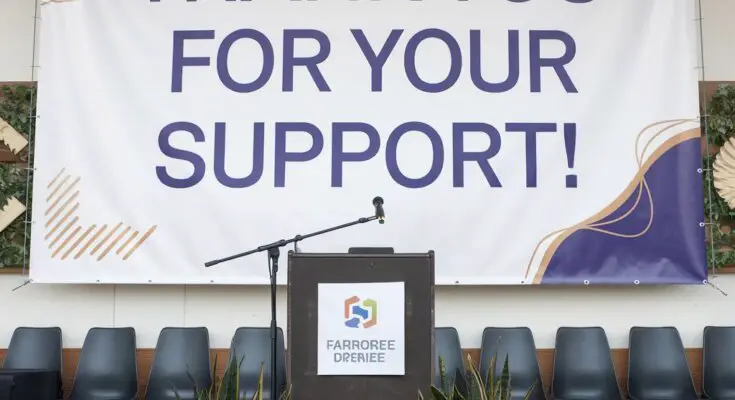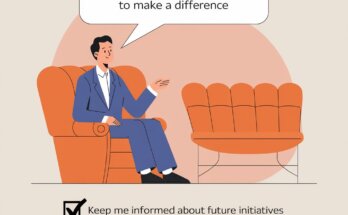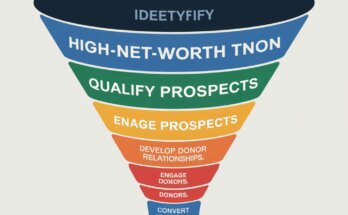In today’s competitive landscape, nonprofits are continually seeking innovative ways to secure funding and support for their missions. One of the most effective methods to achieve this is by utilizing data to attract corporate sponsors.
Data can reveal valuable insights about your organization, target audience, and potential corporate partners, allowing you to craft compelling proposals that resonate with potential sponsors.
Additionally, don’t forget to check out the Corporate Sponsorship Proposal Template to help you craft the perfect proposal.
In this blog post, we’ll explore how to effectively use data to attract corporate sponsors
Data-driven decision-making is at the forefront of corporate strategy today. Companies want to see evidence that their investment will yield tangible results. By presenting compelling data, you can demonstrate your nonprofit’s effectiveness and the potential impact of sponsorship.
Did you know that nearly 70% of companies prefer to support organizations that can show measurable results?
This statistic underscores the necessity of harnessing data in your approach to corporate sponsorships.
This data not only showcases the potential reach of the event but also demonstrates the direct impact the sponsor can have by supporting it.
1. Understand Your Target Audience
The first step in attracting corporate sponsors is to understand your target audience. This means knowing who supports your nonprofit, their interests, demographics, and motivations.
By defining your audience, you can craft messages that resonate with potential sponsors and align with their corporate goals.
a) Importance of Defining Your Audience
Identifying your audience is critical because it helps you focus your efforts on companies that align with your mission.
Corporate sponsors want to know who they will reach by partnering with you, and understanding your audience allows you to present this information confidently.
b) Tools and Methods for Gathering Demographic Data
To get started, you can use various tools to collect data about your audience. Here are a few effective methods:
- Google Analytics: This powerful tool helps you track your website’s visitor demographics, such as age, gender, location, and interests. Understanding who visits your site can help you tailor your messaging to attract potential sponsors.
- Social Media Insights: Platforms like Facebook, Instagram, and Twitter offer analytics that reveal details about your followers, such as their interests and engagement levels. Use this information to identify trends and understand what content resonates with your audience.
- Surveys: Sending out surveys to your supporters can yield valuable insights. Ask questions about their interests, what they value in a corporate partnership, and how they feel about your nonprofit’s mission. This direct feedback can guide your approach to corporate sponsors.
Practical Example
Let’s say your nonprofit focuses on promoting literacy among children in underserved communities. By analyzing your donor data, you might discover that a significant portion of your supporters are parents aged 25-40 who prioritize educational resources. This insight can guide your outreach efforts to companies that produce educational materials or focus on child development.
Did you know that 70% of corporate sponsors prefer to support organizations that align with their audience?
This statistic highlights the importance of understanding your supporters when seeking corporate sponsorship.
2. Showcase Impact through Data
Once you’ve defined your target audience, the next step is to showcase your nonprofit’s impact using data.
Corporate sponsors want to see tangible results from their investments. By presenting clear metrics and success stories, you can demonstrate the effectiveness of your programs.
How to Measure and Present Your Nonprofit’s Impact
To effectively showcase your impact, consider these strategies:
- Collect Data on Program Outcomes: Regularly track the outcomes of your programs. For instance, if you run an after-school tutoring program, measure improvements in student performance, attendance rates, and participant engagement.
- Use Visuals: Infographics and charts can make your data more digestible. Visuals can help convey complex information quickly and effectively, making it easier for potential sponsors to understand your impact.
- Success Stories and Testimonials: Pairing qualitative data with quantitative metrics can create a compelling narrative. Share testimonials from beneficiaries or stakeholders that illustrate the difference your nonprofit makes in the community.
A Real-Life Example
Consider a nonprofit dedicated to providing free meals to families in need. Initially, they struggled to secure corporate sponsorships until they decided to analyze their impact data. They discovered that their meal program had served over 10,000 families in the past year, with 90% reporting improved health outcomes.
With this data in hand, they crafted a compelling presentation for potential sponsors. They included visuals, such as pie charts showing the percentage of families served and bar graphs highlighting improvements in children’s health. The nonprofit also shared heartfelt testimonials from families who benefited from the program.
At a sponsorship pitch meeting, they told the story of a single mother who was able to feed her children nutritious meals because of the program. This combination of hard data and personal stories resonated deeply with the potential sponsors, leading to several significant partnerships.
Tip:
Utilize metrics such as the number of beneficiaries served, program completion rates, and community feedback to create a comprehensive narrative about your impact.
3. Craft Compelling Sponsorship Proposals
After gathering data and showcasing your impact, it’s time to create tailored sponsorship proposals.
A well-structured proposal should highlight your organization’s strengths and the potential benefits for the sponsor.
Key Components of a Strong Sponsorship Proposal
- Executive Summary: Start with a clear overview of your nonprofit, its mission, and how the sponsorship will benefit both parties.
- Data-Driven Insights: Include the demographic data of your audience and metrics that showcase your impact. Make it clear how partnering with your nonprofit can enhance the sponsor’s brand image and community engagement.
- Sponsorship Tiers: Offer various sponsorship levels, outlining what each tier entails. This could include logo placements, mentions in press releases, and opportunities for employee engagement.
- Call to Action: End your proposal with a strong call to action, inviting the potential sponsor to discuss the partnership further.
Practical Example
When preparing a sponsorship proposal for an upcoming community health fair, include the following data points:
- Expected Attendance: Based on previous events, indicate how many attendees you expect and their demographics.
- Success Metrics: Share data from past health fairs, such as the number of health screenings conducted or partnerships formed with local healthcare providers.
- Community Need: Present data highlighting the community’s health challenges and how the health fair addresses these issues.
This information not only showcases the potential reach of the event but also demonstrates the direct impact the sponsor can have by supporting it.
Tip:
Consider using the Corporate Sponsorship Proposal Template to ensure your proposals are professional and comprehensive. This template can guide you in including essential data points and crafting persuasive messaging.
Conclusion:
Using data to attract corporate sponsors is not a one-time effort; it’s an ongoing process of understanding, communicating, and demonstrating impact.
By following the strategies outlined in this blog post, nonprofits can effectively leverage data to secure sponsorships, showcase their value, and build lasting partnerships with corporate sponsors.
Call to Action:
For more expert tips, resources, and access to job opportunities, grant opportunities, and exclusive webinars, subscribe to the Nonprofit Navigators Newsletter. Don’t miss out on valuable insights that can help your nonprofit thrive!
By implementing these data-driven strategies, you’ll be well on your way to attracting the corporate sponsorships necessary to fuel your nonprofit’s mission and create lasting change in your community.
And remember, check out the Corporate Sponsorship Proposal Template to help you craft your proposals with confidence!




